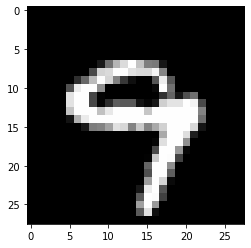This project aims to classify handwritten digits using two different approaches: K-Nearest Neighbors (kNN) algorithm and Dense Neural Networks. The dataset utilized for this task is the MNIST database, which consists of 28x28 pixel grayscale images of handwritten digits.
K-Nearest Neighbors is a simple and effective machine learning algorithm used for classification tasks. The basic idea behind kNN is to classify a data point based on the majority class of its k nearest neighbors in the feature space. In this project, we use the Euclidean distance metric to measure the similarity between data points.
- Training: The algorithm stores all the training data points and their corresponding labels.
- Prediction: When classifying a new data point, kNN calculates the distances between the new point and all the points in the training set.
- Voting: It selects the k nearest data points (neighbors) based on the calculated distances.
- Classification: The majority class among the selected neighbors is assigned to the new data point.
The formula for Euclidean distance is calculated as:
Where:
-
$(x_1$ ,$y_1)$ are coordinates of the first point. -
$(x_2$ ,$y_2)$ are coordinates of the second point. -
$d$ is the Euclidean distance between$(x_1$ ,$y_1)$ and$(x_2$ ,$y_2)$ This formula represents the calculation of the Euclidean distance, which is a crucial step in the kNN algorithm for measuring the similarity between data points.
Neural networks, particularly dense neural networks, have been widely used for classification tasks due to their ability to learn complex patterns in data. In this project, a dense neural network with two hidden layers is employed to classify handwritten digits.
The neural network model consists of the following layers:
-
Input Layer:
- Type: Flatten
- Input Shape: (28, 28)
- Description: This layer flattens the 28x28 pixel input images into a 1D array.
-
Hidden Layer:
- Type: Dense
- Number of Neurons: 100
- Activation Function: ReLU (Rectified Linear Unit)
- Formula:
$(f(x) = max(0, x))$ - Description: This layer applies the rectified linear activation function to introduce non-linearity to the model.
-
Output Layer:
- Type: Dense
- Number of Neurons: 10
- Activation Function: Sigmoid
- Formula:
$\sigma(x) = \frac{1}{1 + e^{-x}}$ - Description: This layer applies the sigmoid activation function to produce class probabilities for the 10 possible digits (0-9).
Before training the model, it needs to be compiled with the appropriate optimizer, loss function, and evaluation metrics.
- Optimizer: Adam
- Loss Function: Sparse Categorical Crossentropy
- Metrics: Accuracy
To train the model, use the fit method with the training data.
model.fit(X_train, y_train, epochs=10)